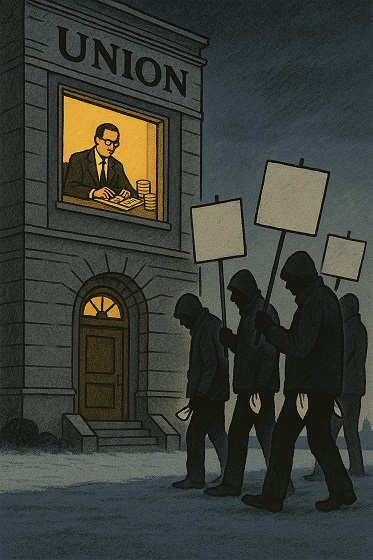Also Interesting
10 Remote Work Trends for 2024

About 12.7% of people in the US work remotely full time, while about 28% more work remotely a part of the day. This involves their side job (side gig), hybrid work model, or finishing their daily tasks once they return home.
With this type of work clearly on the rise, what are some of the remote work trends that you should be looking out for in 2024?
1. Shorter work hours and work weeks
Younger generations of workers are no longer obsessed with profit. Instead, the majority of them are preoccupied with a work-life balance. This is further supported by the fact that roughly 90% of them prefer a 4-day work week even if they’re still paid by the hour.
What they realize and their predecessors didn’t is the fact that the only people who will remember if you worked late 20 years from now are your children. All the money in the world doesn’t mean much if you don’t have the time to enjoy it.
2. Work-life balance
Working from home and having deadlines instead of work hours can allow you to improve your own daily routine. It can help you manage your relationships better and help you avoid having to make too many sacrifices.
There’s further proof that these younger generations value their mental well-being and comfort over profit. For instance, according to one of the latest polls, an average American employee would give up $4,600 per year to work remotely. This is how appealing this way of life has become.
3. Virtual teambuilding
While this was one of the biggest remote work trends in 2023, it’s also expected to be big next year. One of the biggest downsides of remote teams is the fact that it’s hard to keep the loyalty to the team high when you’re not in the office.
Fortunately, teammates can interact virtually. They can participate in online events, play online video games together, have more interactive meetings, etc. These relationships are not parasocial; they’re real; it’s just that they take place in a digital environment.
4. Performance tracking tools
As well as teambuilding, performance management software that can gather key insights on the effectiveness of employees is another key part of remote working that’s helping ensure it’s a success. Through these tools, employers can monitor employees’ performance from a distance, and the best part is, there’s loads of choice to suit all kinds of companies.
Many of these tools also have onboarding tools built-in, and time-tracking functionality so you can manage all aspects of the work cycle in one convenient place. And, with many costing as little as $5/user, all companies can use these tools, regardless of their budget.
5. Higher level of cybersecurity
In 2024, there’s no excuse for falling for a phishing scam or having a weak and unpredictable password. Not a lot of people are just starting out this year, which means that you’re expected to show a level of awareness of an industry veteran.
You don’t even have to do it manually; instead, you can go for software made for the storage of passwords, which can solve this issue without inconveniencing you at all. This will keep your passwords unique and randomized, and make it easier to change them every 60 days.
6. Higher inclusivity
Now, we’re not just talking about preferences but opportunities, as well. From now on, moms (and, to a lesser extent, dads) will no longer have to choose between being at home with their kids or going to work as many did in the past.
This way, even single parents will have an opportunity for an amazing earning potential while still staying to take care of their kids. Sure, this won’t be easy to balance, but it’s an extra opportunity you can’t ignore.
You must also take into account people with disabilities, who are going to get more opportunities to provide for themselves than they ever had in the future. With this higher inclusivity, there’s a much higher chance of finally establishing a truly egalitarian society.
7. Remote work trends offer opportunities to everyone
For an average employee, this means an amazing job opportunity. A specialist can find a remote job in a country with a much higher living standard. This means they can do their work for four or five times higher pay than they would get in their own country.
At the same time, an employer can hire specialists and experts from countries with a lower standard and pay them a fraction of what they would pay someone from their home country. To the remote employee, this might still be significantly higher than what they would get at home.
Why is this (a well-established trend) counted among remote work trends in 2024? Well, according to recent statistics, 67% of managers think that next year, more businesses will switch, at least remotely.
8. Greater emphasis on physical and mental fitness
People working remotely have been noted to display far better physical and mental fitness than their counterparts working from an office. It’s not just the fact that one works in the environment of their own choosing but other related factors, as well.
On average, people working from home experience less burnout (up to 36% of people report so). They also report reduced levels of depression and anxiety. They sleep better, have an option to make healthier food choices and display overall physical health benefits.
9. Emphasis on eco-friendliness
So far, the majority of remote work proponents have promoted cost-effectiveness and convenience as the strongest factors. From the standpoint of a pragmatist, these are the two most compelling arguments, but the modern audience is a bit more issue-minded.
After all, remote work eliminates the need for the commute. It also reduces the use of utilities since people would use these resources in their homes either way, regardless of whether they’re working or not.
The CO2 emissions, resource consumption, and everything related go down when people start working from home. This makes it one of the trends in remote work that might pick up the most in the coming year.
10. Around-the-clock support
Having 24/7 support is no longer an extra feature – it’s a mandatory requirement for anyone doing business in this day and age. This is what makes it one of the biggest remote work trends in 2024.
Today, you have chatbots to provide this service, but this is just the tip of the iceberg. It’s also worth mentioning that it’s a lot easier to find someone who can work the odd shifts due to the difference in time zones. It might not be as significant as some other benefits of remote work, but it certainly plays an important role.
11. Generational support of remote work
Generational zeitgeist is something that you shouldn’t be too quick to dismiss. With boomers mostly going into retirement or already retired, millennials, Gen Z, and Gen X make up the majority of the modern workforce.
Coincidentally, these generations are all overwhelmingly in support of remote work. This alone would be enough to cement the future of remote work for years and years to come. Needless to say, it’s highly unlikely that future generations (beyond Gen Z) will reverse this trend.
Working from home is amazing, and now everyone knows it
The cat is out of the bag, and no one can pretend that working from home is not an amazing idea. It saves money, offers more opportunities, and improves work-life balance.
Sure, it has its challenges, but the truth is that these are far more solvable than you think. In other words, the interest in this type of work is only going one way – up. With remote work trends making this offer more and more appealing to entrepreneurs and global workforce alike, the future of this employment model seems quite bright.
Also Interesting
PlayAlberta’s Struggle to Compete With International Platforms

Even though PlayAlberta is the only legal online gambling platform in the province, approximately 55% of Albertans access offshore online casino websites and sports betting sites. Multiple reports indicate that PlayAlberta only captures 25% to 45% of the Alberta iGaming market, and as a result, billions of dollars are flowing to international operators rather than remaining in provincial hands.
International platforms have gained a loyal following of Albertan players by providing what government-backed PlayAlberta often cannot. According to Esports Insider Canada insights, these offshore sites typically offer players more game variety, better bonus structures, and faster withdrawal processing.
The competitive disparity is so large that earlier this year, the legislature passed Bill 48, also known as the iGaming Alberta Act, to try to bring offshore operators under a regulated regime by opening up Alberta’s market to private operators. At a press conference before the bill was tabled, Minister Nally was frank enough to recognize the reality: online gambling grows in the province regardless of legislation, and if Bill 48 is defeated, that will not prevent offshore gambling from expanding.
Alberta lawmakers are taking action towards an Ontario-style iGaming market by 2026. Consequently, players still choose international sites, rather than the government-sponsored alternative. The offshore platforms are not a novelty. They have been working in digital shadows for years, creating loyalty through offerings that PlayAlberta can’t compete with. Despite attempts to create a friendly gaming environment in Alberta, the regulated platform has not managed to attract its target audience. It was supposed to be something safer, more home-grown. On the other hand, many players find it limited, constraining, or ultimately simply not as competitive as that which exists elsewhere.
Offshore casinos keep libraries of at least thousands of games. Their online gambling platforms feature popular online slots, table games, live dealer titles, and specialty software. In collaboration with leading studios like Games Global, Pragmatic Play, and Evolution Gaming, they bring to Alberta content that Albertans already know and love. PlayAlberta’s library, on the other hand, is still modest.
While it provides a decent balance of slots, table games, and lottery-style selections, its library is limited, and updates are infrequent. Additionally, for players who prefer novelty or the latest releases, the controlled platform is just too restrictive. This is one of PlayAlberta’s greatest shortcomings, pushing players to offshore platforms where they can get scale, variety, and content updates regularly.
The bonus imbalance worsens PlayAlberta’s competitive deficit. The provincial site provides welcoming bonuses, cashbacks, reload promotions, and exclusive offers to bettors for Alberta sports teams. Offshore platforms offer the same range, but in much larger quantities. New users of PlayAlberta who deposit $10 get $50 in bonus cash.
A player who deposits the same amount at an average offshore site can get a matching bonus of up to 100% of the deposit amount up to $2,000, with the addition of 200 bonus spins. The difference is stark, as pointed out above. PlayAlberta has asserted that responsible and sustainable play is important. However, against larger bonuses, the decision of many players is clear.
PlayAlberta recently unveiled a new, more colourful logo to emphasize its homegrown advantage. Its mobile app has been updated with a new interface design, including cleaner navigation and improved performance across additional betting verticals. AGLC VP of Gaming Dan Keene explained that PlayAlberta is the Albertans’ entertainment destination, adding that in order to improve overall player experience, app functionality will keep expanding. He was excited about how the brand has grown and developed over five years into a platform that celebrates the unique identity of Alberta.
However, these enhancements are not really competitive when compared to major offshore sites that invest heavily in mobile-first design. Their apps are lightweight, offer smooth in-game transitions, and come with customization options. PlayAlberta’s interface is functional, and supports digital wallet integration as well as responsible play functions. However, its customization and interactive features are still basic compared to other competitors worldwide.
Also Interesting
Historic Return: NHL Confirms Player Participation in 2026 Winter Olympics

The NHL has officially confirmed the inclusion of its players in the 2026 Winter Olympics in Milan-Cortina, Italy, following a 12-year absence that left the fans craving the excitement of the real best-on-best international hockey. The announcement is a historical event, as it goes back to the Olympic arena where the hockey powerhouse nations of the world will eventually be faced with their complete NHL prowess.
The ruling has not only shaken the hockey fraternity but also the sports fraternity at large, as it has generated early predictions, betting debates, and revived rivalries. Also, such large websites as GGBet, where many fans place their bets, have also been on the lookout, offering odds and analysis on which country will win gold.
A Long-Awaited Comeback
Since the 2014 Olympics in Sochi, NHL players have not been given the chance to play in the Olympics. The spectators have since witnessed world championships that, even though competitive, did not have the superstar appeal of Olympic hockey. This decision of the league in selecting the players to Milan-Cortina is a recreation of the desires of the NHL and the international arena to become one again.
The 2026 tournament will be the one offering the excitement, talent, and passion that will be fitting among NHL players. These legends, such as Sidney Crosby, Connor McDavid, Auston Matthews, and Leon Draisaitl, could play with young players like Jack Hughes and Tim Stützle – that sort of experience and youth.
The Tournament Breakdown
The event in hockey will take place between 11 and 22 February 2026, and the team count will be 12, which will be divided into three groups:
● A: Canada, Switzerland, Czechia, France.
● B: Italy, Finland, Sweden, Slovakia.
● C: Latvia, Denmark, the US, Germany.
The teams will be playing three pre-elimination games followed by play-off, which will lead to the final match, and a gold medal will be given on February 22.
Slovakia is going to play against Finland, and Sweden against Italy. Team USA starts playing on February 12, and Team Canada plays against Czechia. The matches would all be at either the Santagiulia Ice Hockey Arena or the Rho Ice Hockey Arena, both in Milan.
Why This Moment Matters
It is not only entertainment but a legacy that the NHL has gone back to the Olympics. To the league, it reestablishes itself as the world body in professional hockey. To players, it makes their lifelong dream of playing in the national team a reality in the biggest sporting arena. And to fans, it revives the magic that made such moments as Crosby scoring his Golden Goal in Vancouver 2010 unforgettable.
Nevertheless, beyond the ice, such a move will make the NHL more global and strengthen the new generation of sportsmen. The Games of 2026 are expected to achieve a huge global following, whereby fans in North America, Europe, and other continents will be reached.
Looking Ahead
As the opening of February 2026 approaches, the teams are plotting, investigating, and preparing to contest a tournament that numerous people are calling the most competitive Olympic hockey tournament to date. The already existing dream is Canada vs. USA, Finland vs. Sweden, and national pride will clash against the NHL-type talent.
Final Thoughts
It is not a sports story, but a cultural phenomenon because NHL players are returning to the 2026 Winter Olympics. It is an embodiment of unity, excellence, and the unadulterated affection of hockey. The fans all around the world are eagerly awaiting the days when the puck will drop in Milan and they will be watching a show that has been 12 years in the making.
The tournament will not be remembered for the successive gold medals, but rather for the first face-off to the final gold medal celebration. It can be either your country that wins; it could be just watching the magic, but in any case, one thing is certain: the Olympics are back, and the game has never been this alive.
-

 Daily Caller2 days ago
Daily Caller2 days agoDemocrats Explicitly Tell Spy Agencies, Military To Disobey Trump
-

 Energy2 days ago
Energy2 days agoCarney bets on LNG, Alberta doubles down on oil
-

 Indigenous2 days ago
Indigenous2 days agoTop constitutional lawyer slams Indigenous land ruling as threat to Canadian property rights
-

 Alberta2 days ago
Alberta2 days agoAlberta on right path to better health care
-

 Alberta24 hours ago
Alberta24 hours ago‘Weird and wonderful’ wells are boosting oil production in Alberta and Saskatchewan
-

 Alberta2 days ago
Alberta2 days agoCarney government’s anti-oil sentiment no longer in doubt
-

 Alberta2 days ago
Alberta2 days agoAlberta Emergency Alert test – Wednesday at 1:55 PM
-

 Daily Caller2 days ago
Daily Caller2 days agoALAN DERSHOWITZ: Can Trump Legally Send Troops Into Our Cities? The Answer Is ‘Wishy-Washy’





